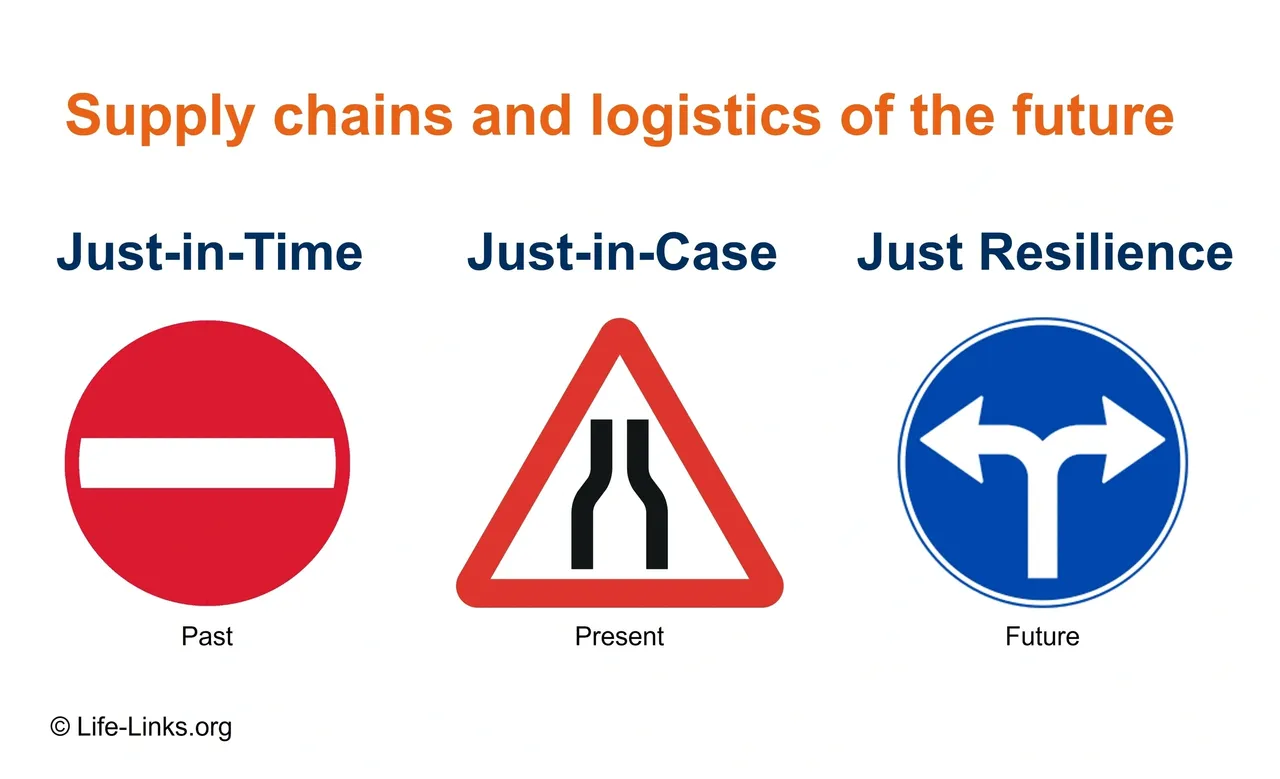Just-in-Time, Just-in-Case, Just Resilience!

Supply-chain disruptions are ALWAYS! Sophie Punte, CEO of Life-Links on why supply-chain, procurement and logistics managers can no longer rely on either the just-in-time or the just-in-case strategies but should build resilience into their supply chains.
Supply chains are now so complex that simply keeping track of them is a specialism. Manufacturers depend on suppliers often distributed around the globe. The typical aerospace manufacturer has 12,000 suppliers. In the automotive industry, that figure rises to 18,000. For the average S&P 500 enterprise 1,700 direct suppliers may be manageable. But try to do this with the 1.5 million supply chain relationships through the first three tiers!
Managing supply chains is critical. Without it, the goods so many of us take for granted – from iPhones to tropical fruits – either wouldn’t be able to reach us or simply wouldn’t be economic to produce at all. To keep costs down, many companies apply a ‘just-in-time’ strategy to deliver materials and products exactly when they are needed. This optimizes inventories, reduces waste and improves efficiency.
But as we’ve all become painfully aware during Covid, supply chains are vulnerable to disruptions caused by crises or unforeseen incidents. Of 200 surveyed supply chain executives, 72% found that the pandemic had a negative effect on their company.
In response, companies shifted to a ‘just-in-case’ strategy, by ensuring enough inventory to withstand an unforeseen event, often combined with supply chain restructuring. For example, companies such as Honeywell and Ralph Lauren restructured supply chains by reducing imports from China and increasing imports from other Asian countries, as well as from Canada and Mexico, while also shifting to lower-frequency higher-quantity shipments.
Everything points to the need to step up a notch. Deloitte’s global survey of 350 procurement leaders concluded that ‘there is a clear imperative to build agility and resilience into supply chains.’ This year, interos.ai predicts a perfect storm of supply-chain risks comprising of geopolitics, cyber, trade, climate and AI.
On the 5th anniversary of the Covid crisis, it’s time for supply-chain, procurement and logistics leaders to adopt a just resilience strategy for managing supply chains. The following would be a good start:
-
Treat your supply chains as a STRATEGIC asset and not as a ‘cost center’ with necessary expenditures that should be reduced to a bare minimum. I’m concerned that many companies have gone back to the pre-Covid way of working, ignoring the risk of similar disruptive events.
-
Use business continuity management (BCM) software, supported by AI, to record, measure and report on performance-affecting supply chain disruptions - BCI found that less than 40% of surveyed companies use such software. The added benefit of doing so is that several software solutions combine risks management with ESG as well as compliance monitoring and reporting.
-
Invest in building resilient supply chains with four pillars: diversification, localization, visibility and flexibility. Supply-chain disruption is ALWAYS. We just don’t know which hazard will come next, when, and how severe the impact will be. ‘Resilient’ risk management (building ‘life-links’ in your supply chain), rather than ‘reactive’ risk management (throwing a lifebuoy after the event), is the logical choice.
Finally, for those returning from Transforming Transportation or heading to Smart Freight Week I have a specific question: can you succeed with your transport and freight decarbonization strategies without considering resilience and adaptation to climate change?
(Thanks to Karl Wright for edits and suggestions)
About Life-Links
Life-Links was founded by Sophie Punte together with the Kuehne Climate Center. It is dedicated to mobilizing industry, the development community and other stakeholders to co-invest and collaborate in making critical logistics links in their supply chains more resilient to climate disruption, while reducing GHG emissions and enhancing sustainability at the same time. www.life-links.org
